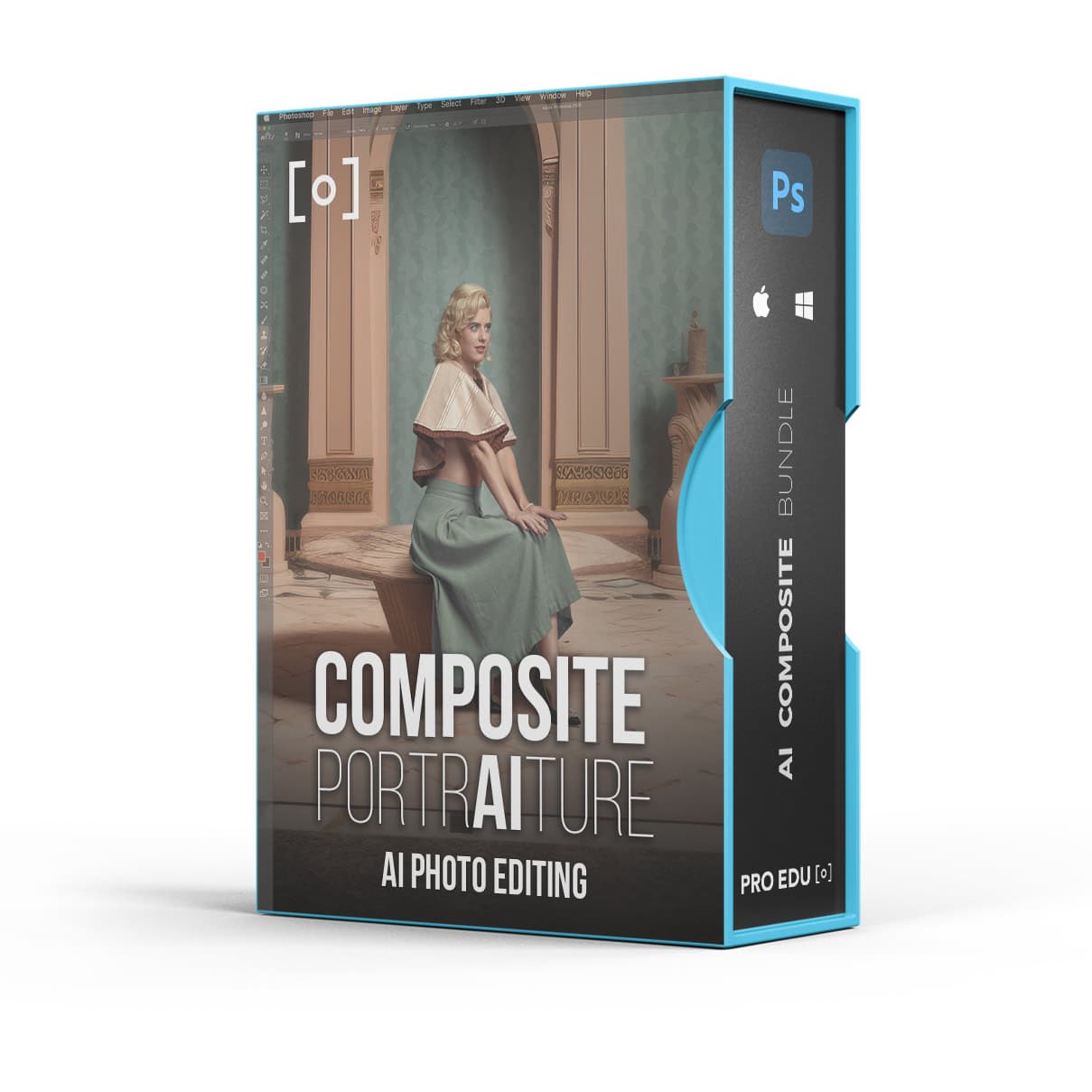What is Content-Aware in Photoshop: A Concise Guide
In the world of photo editing, Adobe Photoshop is a powerful and versatile tool that offers an array of features to help users create professional-quality images. One standout feature that dramatically enhances the image editing process is the Content-Aware technology. It is designed to help users easily remove or replace unwanted elements from their images by analyzing the pixels around the selected area and generating new image details that blend seamlessly with the surroundings.
The Content-Aware functionality can be found in various tools within Photoshop, providing different levels of precision and control, depending on the user's needs. It's particularly useful when attempting to remove unwanted objects, fill in gaps, or patch up inconsistencies in images. Although Content-Aware technology may seem intimidating at first, learning how to leverage its features with PRO EDU's professional photography tutorials can greatly improve the overall editing experience.
Key Takeaways
- Content-Aware technology is a powerful feature in Adobe Photoshop that helps users remove or replace unwanted elements in images.
- The functionality can be found in various tools within Photoshop, offering different levels of precision and control.
- Learning how to effectively use Content-Aware features can be accomplished by leveraging professional education resources such as online tutorials.
Understanding Content-Aware in Photoshop
Content-Aware Fill
Content-Aware Fill is a powerful feature in Adobe Photoshop that allows us to remove unwanted objects from an image. Introduced in Photoshop CC 2018, this tool analyzes surrounding pixels to intelligently fill and blend the removed area, producing impressive results with minimal effort. To learn more about advanced photography and Photoshop techniques, check out these courses for artists.
Content-Aware Move
Another useful Content-Aware feature in Photoshop is the Content-Aware Move tool. This tool enables us to seamlessly move or extend an object within an image while automatically adjusting the background. The intelligent algorithms analyze surrounding pixels, making the moved object blend naturally with its new environment.
Content-Aware Patch
Lastly, the Content-Aware Patch tool is an effective method for repairing larger areas in an image. This tool shares similarities with the healing brush, but it provides more control over the area to be patched. After selecting the desired area for patching, we can choose a source region, and Photoshop's Content-Aware technology will automatically blend the selected area with the source, resulting in a polished and natural-looking image.
Working with Selection Tools
Using Lasso Tools
In Photoshop, we utilize different types of lasso tools to make selections quickly and accurately. The Lasso Tool lets us make freehand selections, while the Polygonal Lasso Tool focuses on creating straight-edged segments. The Magnetic Lasso Tool is an advanced tool that automatically detects and snaps to the edges of an object.
Object Selection Tool
The Object Selection Tool simplifies the process of selecting a specific object within an image. To use it, click and drag the tool to form a rectangle or lasso around the object you want to select. Photoshop's artificial intelligence will analyze the area and make a precise selection of the object. This can be useful when we need to move or edit specific objects in our composition.
Magic Wand Tool
The Magic Wand Tool is another helpful selection method in Photoshop, which allows us to select pixels based on their color values or brightness. When using this tool, simply click on the area of the image containing the color you want to select. In addition, we can adjust the tolerance level to control the color range the tool selects. This is particularly helpful when trying to isolate areas with similar colors or removing a solid color background.
Advanced Editing Techniques
Using Healing Brush
In Photoshop, we often use the Healing Brush tool to seamlessly blend elements and remove imperfections. By selecting a source point, we can paint over the unwanted area, and the tool intelligently merges the texture and color with the background. This is particularly helpful for retouching skin or removing dust spots in images.
Undo and Redo Moves
When working on complex edits, it's crucial to be able to undo and redo actions. Photoshop allows us to easily step backward and forward through our edit history in the History panel. By default, the software remembers 50 steps, but we can adjust this value in the Preferences menu to fit our needs.
Layer Adjustment
Layer Masks
Utilizing layer masks is a non-destructive way to hide or reveal parts of a layer without permanently altering it. We can paint with black on the layer mask to hide areas, and with white to reveal them. Combining layer masks with adjustment layers allows for precise control over color and lighting adjustments.
Adjustment Layers
Adjustment layers are non-destructive editing tools that apply color and tonal adjustments to our image without altering the original pixels. They can be added from the Adjustment panel, and include options like Levels, Curves, and Hue/Saturation. By adding an adjustment layer, we can experiment with various corrections without fear of damaging the original image.
Scaling
When resizing elements in Photoshop, it's essential to maintain image quality by using the appropriate scaling method. We typically recommend using Edit > Transform > Scale or the Free Transform tool, which allows us to resize objects while preserving the original details and preventing pixelation. Holding the Shift key while scaling will constrain the proportions, keeping the aspect ratio intact.
Content-Aware Workspace and Settings
Exploring the Workspace
The Content-Aware Fill workspace in Photoshop offers an interactive editing experience for precise image manipulation. This workspace features a live, full-resolution preview, allowing us to refine the sampling area that Content-Aware Fill uses to achieve the desired results 1. Let's examine the various components of the Content-Aware Fill workspace, such as the Options Bar and Fill Settings.
Adjusting Settings
In the Content-Aware Fill workspace, we have several settings to adjust. The Options Bar at the top provides essential tools for selecting and removing areas from the sample 2. The Fill Settings panel allows us to adjust aspects like color adaptation, rotation adaptation, and scale for better blending with the surrounding areas 3.
Here is a brief overview of these options:
- Color Adaptation: Controls the color blending of the filled area with its surroundings
- Rotation Adaptation: Compensates for slight rotational differences between the sampled area and the area being filled
- Scale: Adjusts the size of the sampled area to better match the filled area
The Output Settings are an essential part of the process as well, allowing us to control how final adjustments affect the image. Options include creating a new layer for non-destructive edits or applying the changes directly to the current layer 4.
By understanding and utilizing the Content-Aware Workspace and its various settings, we can seamlessly edit our images and achieve professional results.
Frequently Asked Questions
How does Content-Aware Fill work in Photoshop?
Content-Aware Fill is a powerful feature in Photoshop that allows you to remove unwanted objects or elements from your images. It works by analyzing the surrounding pixels and using that information to generate a seamless fill. By using the Content-Aware Fill workspace, you can refine the sampling area and adjust settings for better results.
Why is Content-Aware Fill greyed out or unavailable?
Sometimes, Content-Aware Fill may be greyed out or unavailable due to certain reasons. It could be because the selected layer is locked or has no pixel information. Ensure that you are working on a rasterized layer, and that the layer is unlocked and has the necessary pixel information.
What is the difference between Content-Aware Scale and Fill?
Content-Aware Scale is a feature that allows you to resize images without distorting the important content. It analyzes the image, preserves the critical areas, and rescales the rest of the image. On the other hand, Content-Aware Fill is used to remove unwanted objects or elements and seamlessly fill the area with surrounding pixels.
Can I use Content-Aware Fill in Photoshop CS6?
Yes, Content-Aware Fill is available in Photoshop CS6. However, keep in mind that the feature might not be as advanced as it is in the latest Photoshop versions. The Content-Aware Fill workspace and some refined settings are introduced in later versions.
How do I clean up results after using Content-Aware Fill?
After using Content-Aware Fill, some results might need a little more refining. To clean up the filled area, you can use tools like the Clone Stamp, Healing Brush, or Spot Healing Brush. These tools will help you manually adjust any imperfections and blend the area seamlessly with the surrounding pixels.
Are there any alternatives to Content-Aware Fill in Photoshop?
Yes, there are alternative methods you can use to remove unwanted objects or elements in your image. Tools such as the Clone Stamp, Healing Brush, and Patch Tool can also achieve similar effects. Additionally, you can explore third-party plugins or other software for more specialized alternatives, depending on your specific needs.














